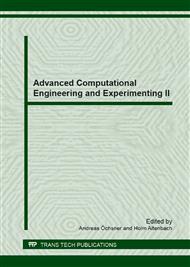p.67
p.81
p.87
p.93
p.99
p.103
p.111
p.117
p.125
Extreme Modal Combinations for Pushover Analysis of RC Buildings
Abstract:
The pushover method is a practical procedure for comprehensive nonlinear analysis of structures subjected to seismic action. Application of this method, in accordance with the Eurocode 8 rules and due to engineering simplicity, favours application utilizing the first mode. The aim of the presented research in this paper was to find the influence of multi modal combinations in assessing the bearing capacity of reinforced concrete (RC) frames and walls. This paper presents a procedure in which the most extreme state is defined by the lowest ground acceleration caused by a predetermined shape of an elastic spectrum. The extreme bearing value is obtained by the envelope principle. Mode shapes and period sizes are determined on a linear elastic model while the limit state of the load bearing system is evaluated in a nonlinear state of structures. Results of the analysis show that influences of higher modes are significantly higher and that the safety/reliability, indicated by the criteria for the target displacement, in accordance with Eurocode 8 (Annex B), is not achieved. Inclusion of higher modes, in some presented examples, decreases the peak ground acceleration by more than two times, which is significantly less favourable than the target displacement criteria.
Info:
Periodical:
Pages:
117-124
Citation:
Online since:
June 2013
Authors:
Price:
Сopyright:
© 2013 Trans Tech Publications Ltd. All Rights Reserved
Share:
Citation:


